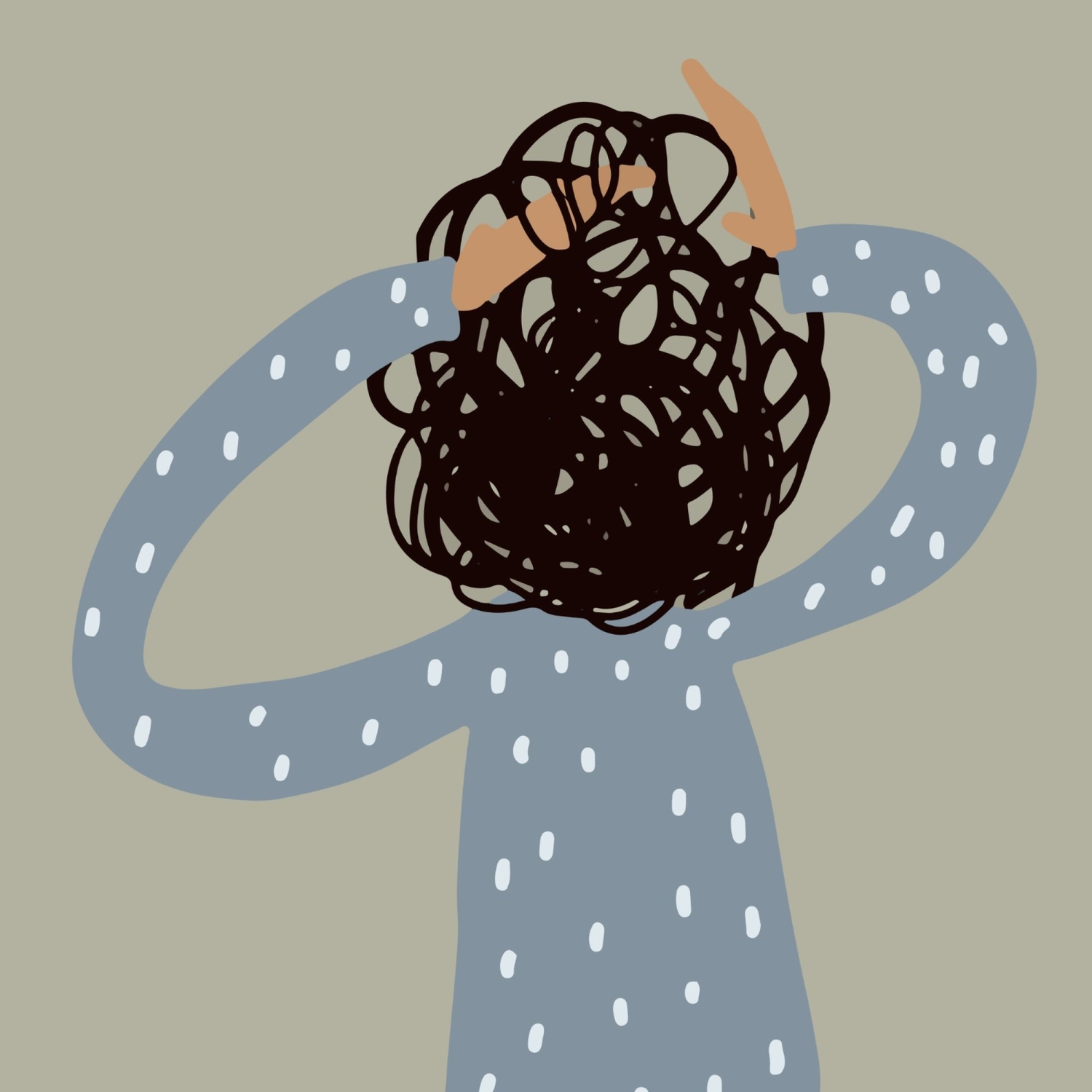Introduction to Anxiety Worksheet
Download the free intro to anxiety worksheet
Download free resource
Enter your email below to access this resource.
By entering your email address, you are opting-in to receive emails from SimplePractice on its various products, solutions, and/or offerings. Unsubscribe anytime.

Looking for an introduction to anxiety worksheet? This free printable anxiety worksheet provides an overview of anxiety that is adaptable for teens and adults.
Anxiety disorders are one of the most common mental health conditions, affecting nearly one third of American adults at some point in their lives. As a mental health therapist, you’re likely familiar with supporting clients with anxiety.
Whatever the source of your client’s anxiety, or the way in which it manifests, introduction to anxiety worksheets can be great tools to help your clients to alleviate some of their worries.
There are several different types of anxiety worksheets you can save to your electronic health record (EHR) and use with clients, including worksheets for teens, adults, social anxiety worksheets, and more. In this article, we provide an introduction to anxiety worksheet, which includes an overview of anxiety to help clients understand their thoughts and anxiety triggers.
Benefits of using anxiety worksheets with clients
Worksheets are a great therapeutic tool to use in your therapy practice as part of a diverse set of tools and treatment strategies.
Benefits of anxiety worksheets include:
- They provide a focal point during a session, helping you work through the source of a client's anxiety.
- They can be used as a psychoeducational tool, such as an introduction to anxiety worksheet.
- They increase awareness of the ways anxiety is showing up in the client’s life and its impact on their important areas of functioning.
- Help clients identify anxiety triggers and strategies to increase coping skills.
- Highlight the need for strengthening distress tolerance skills.
- Restructure negative thought patterns into more adaptive beliefs and behaviors.
We’ve listed several different types of anxiety worksheets below, which can be used with both adults and teens. These worksheets address sources of anxiety, provide grounding techniques to ease anxiety, opportunities to reframe anxiety-related thought patterns, and ways to strengthen coping strategies.
Anxiety worksheets for adults
Challenging irrational thoughts
This worksheet focuses on recurrent thoughts that lead to feelings of anxiety. After identifying these thoughts, the client evaluates how rational they are and is given an opportunity to reframe their thoughts into more adaptive thinking.
Clients are asked to answer prompts like:
- How likely is it that their worst fear may come true?
- What is a more positive outcome?
- What is the most likely scenario?
The whole picture of anxiety
The whole picture of anxiety worksheet increases awareness of how anxiety shows up in the client’s life. The worksheet prompts the client to name their anxiety by identifying where it shows up in their body, thoughts that fuel the anxiety, its intensity, associated behaviors, and the impact the anxiety is having on their life.
Anxiety triggers worksheet
The anxiety triggers worksheet helps clients identify their main sources of anxiety by providing prompts about common triggers and how they experience the anxiety in their body.
For instance, the client may circle financial worries, social anxiety, or abandonment fears as the sources of their anxiety. This information can then be used to develop helpful coping strategies.
Grounding techniques
The 5-4-3-2-1 practice is a mindfulness grounding technique designed to provide a source of calm and relief in moments of stress. The idea is for clients to use all five senses, such as naming five things they can see, four things they can hear, three things they can feel, two things they can smell, and one thing they can taste.
Anxiety in control worksheet
The anxiety in control worksheet is a great choice for clients who have anxiety that manifests in overcontrol of people and situations. The worksheet asks the client to identify the specific situation causing anxiety and to name the things related to the scenario that they can control, and what is outside of their control.
What ifs worksheet
The what ifs worksheet helps clients identify negative thought patterns and reframe “what ifs” to more positive and balanced perspectives by listing anxiety-producing thoughts. Then, clients can counter them with more positive outcomes.
Anchor breathing
The anchor breathing worksheet helps center clients into the present moment using a mindfulness technique that asks them to focus on their breathing. They can close their eyes, imagine a quiet place, and visualize an anchor keeping them feeling grounded in that moment. Ask them to breathe slowly and deeply for 5 to 10 minutes.
Categories worksheet
The categories worksheet helps clients identify sources of joy and pleasure in their life to provide balance when feeling overwhelmed by stressors like work or childcare responsibilities. You or the client can identify the categories, such as music, games, sports, books, relaxing activities, favorite snacks, etc.
Anxiety worksheet for teens
Many of the anxiety worksheets for adults can be adapted for teens. We’ve listed a few below and how they can be changed to more relevant adolescent scenarios and strategies.
Grounding techniques
The 5-4-3-2-1 grounding technique practice is great for adolescents—just guide them through their senses with things in a familiar environment where they may encounter stress, like school.
Categories worksheet
Use the categories worksheet with teens to identify categories of happiness in their life, such as music, games, sports activities, after school events, books, favorite snacks, etc.
What ifs worksheet
The what ifs worksheet can help clients identify negative thought patterns—such as those related to failing an exam or social rejection—and reframe them to other possible what ifs.
For example, reminding themselves they are doing their best, naming their friends, highlighting ways in which they have been picked socially, and noting some of their academic successes.
Social anxiety worksheets
Social anxiety worksheets support clients to better understand the source of their anxiety in social situations. For instance, common sources of social anxiety are fear of being judged by others, worry about embarrassing themselves, and fear of public speaking.
The worksheets help clients find the sources of their anxiety, and provide prompts to evaluate real social situations by reflecting on how the social event unfolded and whether their initial fears were accurate. Over time, these insights can help to increase self-esteem and confidence and reduce anxiety about social situations by reinforcing observations that their social fears were unfounded.
CBT for anxiety worksheets
Several anxiety worksheets contain components of cognitive behavioral therapy (CBT), as they seek to evaluate negative core beliefs and thoughts and their impact on behavior—and provide prompts for cognitive restructuring and more adaptive coping strategies.
Some specific CBT for anxiety worksheets include:
Thought log
A CBT thought log can help clients identify unhelpful thoughts and patterns by recording the specific details of their thoughts—including the date and time of the situation, automatic thoughts, feelings, and behaviors.
Catastrophic thinking worksheet
Like a thought record, this worksheet takes the log a step further by challenging catastrophic thinking.
It evaluates the accuracy of the thoughts by asking:
- Are these thoughts true?
- What evidence is there to support these thoughts?
- What is the best, worst, and most likely outcome?
- Are there other possible ways to look at the situation?
Coping card
You can create worry cards in session with clients using their own words. The coping card serves as a reminder when the client is feeling anxious that they are capable of coping, their thoughts are not facts, and includes words of affirmation that they have found helpful in the past.
What’s included in the introduction to anxiety worksheet?
The free printable anxiety worksheet provides:
- A brief introduction to anxiety, to explain to clients what is happening in their bodies when experiencing anxiety
- Prompts to identify:
- Anxiety triggers
- How anxiety is experienced
- Negative thought patterns
- Space to record coping strategies that can be discussed during session
The introduction to anxiety worksheet can also be used in a telehealth session using a virtual whiteboard, during an in-person session, or it can be provided as homework for your client to complete on their own.
How SimplePractice streamlines running your practice
SimplePractice is HIPAA-compliant practice management software with everything you need to run your practice built into the platform—from booking and scheduling to insurance and client billing.
If you’ve been considering switching to an EHR system, SimplePractice empowers you to streamline appointment bookings, reminders, and rescheduling and simplify the billing and coding process—so you get more time for the things that matter most to you.
Try SimplePractice free for 30 days. No credit card required.

